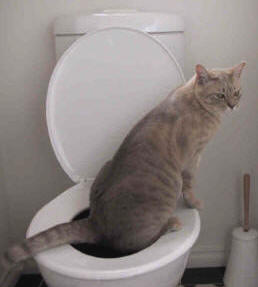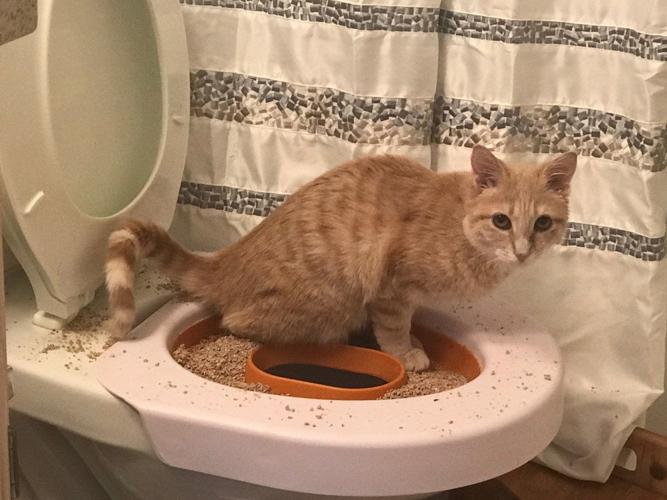The Dangers of Animal Waste in the Toilet
The Dangers of Animal Waste in the Toilet
Blog Article
The article which follows in relation to 10 Things You Should Never Flush Down The Toilet is pretty much entertaining. You should check this stuff out.

When it concerns getting rid of waste, especially animal waste, lots of people typically resort to the convenient alternative of flushing it down the bathroom. However, this seemingly very easy option can have serious repercussions for the atmosphere and public health. In this article, we'll discover why flushing animal waste down the toilet is a poor idea and give alternate methods for correct disposal.
Introduction
Correct waste disposal is crucial for preserving environmental sustainability and public health. While it might seem safe to flush animal waste down the commode, it can result in different issues, both for the atmosphere and human well-being.
Dangers of flushing animal waste
Ecological impact
Flushing pet waste introduces harmful microorganisms and microorganisms right into waterways, which can adversely impact water ecosystems. These microorganisms can contaminate water sources and injury marine life, disrupting fragile ecosystems.
Public health issues
Pet waste contains dangerous bacteria such as E. coli and Salmonella, which can position significant health dangers to humans. Purging pet waste down the toilet can pollute water products, leading to the spread of diseases and infections.
Alternatives to flushing
Rather than purging pet waste down the toilet, there are numerous alternative disposal techniques that are a lot more eco-friendly and sanitary.
Composting
Composting pet waste is an environmentally friendly method to throw away it. By composting, organic matter is broken down into nutrient-rich soil, which can be utilized to feed gardens and plants.
Land fill disposal
Dealing with pet waste in a landfill is an additional option. While not as environmentally friendly as composting, it is a safer option to flushing, as it stops the contamination of water sources.
Pet garbage disposal systems
There are customized family pet waste disposal systems readily available that securely and hygienically get rid of animal waste. These systems commonly utilize enzymes to break down waste and get rid of odors.
Actions to correct pet waste disposal
To make certain appropriate disposal of animal waste, follow these steps:
Scooping and bagging waste
Frequently scoop and bag pet waste using naturally degradable bags. This prevents waste from polluting the atmosphere.
Utilizing assigned waste bins
Dispose of bagged animal waste in marked waste containers, such as garden compost bins or garbage dump bins. Stay clear of flushing it down the toilet in all costs.
Cleaning can and family pet areas routinely
Regularly clean litter boxes and animal locations to avoid the buildup of waste and germs. Usage pet-safe cleaning items to maintain hygiene.
Advantages of appropriate disposal methods
Adopting correct disposal techniques for animal waste offers numerous advantages:
Decreased environmental pollution
Proper disposal techniques reduce the threat of environmental pollution, protecting rivers and communities from contamination
Lessened risk of water contamination.
By avoiding flushing pet waste down the toilet, the danger of water contamination is considerably lowered, safeguarding public health.
Boosted cleanliness and health
Appropriate disposal methods promote far better sanitation and health, creating a much safer atmosphere for both humans and animals.
Verdict
In conclusion, purging pet waste down the bathroom is unsafe to the atmosphere and public health. By taking on alternative disposal approaches and following appropriate waste monitoring practices, we can lessen the adverse impact of animal waste and add to a cleaner, much healthier planet.
What To Do With Dog Poo – The Do's And Don'ts Of Disposing Of Faeces
Dog poo bins
Some councils provide dedicated dog waste bins in popular dog-walking areas that can take dog poo that has been bagged but you can legally dispose of dog waste in any public litter bin, as long as it is securely bagged. This also applies to your wheelie bin at home.
Do not flush
Water companies do not recommend flushing dog faeces down the toilet because certain parasites can survive the water processing treatment and are potentially harmful to humans. You should also never consider flushing dog poo that has been bagged down the toilet as the bags will not break down and instead create severe blockages in the sewage system.
In the woods
The Forestry Commission promotes a ‘stick and flick’ method for dealing with waste in the woods. This means finding a stick and using it to flick any poo from off the path so that it is out of the way of other walkers. You could also bury it as long as it is not in an area where there might be livestock.
Livestock
Parasites found in dog poo can be transmitted to livestock if they inadvertently eat infected faeces that has been left on grazing land. This could result in the death of sheep or abortion in cattle so you should always make sure you pick up your dog’s waste in fields where livestock could be present.

Regularly clean litter boxes and animal locations to avoid the buildup of waste and germs. Usage pet-safe cleaning items to maintain hygiene.
Advantages of appropriate disposal methods
Adopting correct disposal techniques for animal waste offers numerous advantages:
Decreased environmental pollution
Proper disposal techniques reduce the threat of environmental pollution, protecting rivers and communities from contamination
Lessened risk of water contamination.
By avoiding flushing pet waste down the toilet, the danger of water contamination is considerably lowered, safeguarding public health.
Boosted cleanliness and health
Appropriate disposal methods promote far better sanitation and health, creating a much safer atmosphere for both humans and animals.
Verdict
In conclusion, purging pet waste down the bathroom is unsafe to the atmosphere and public health. By taking on alternative disposal approaches and following appropriate waste monitoring practices, we can lessen the adverse impact of animal waste and add to a cleaner, much healthier planet.
What To Do With Dog Poo – The Do's And Don'ts Of Disposing Of Faeces
Dog poo bins
Some councils provide dedicated dog waste bins in popular dog-walking areas that can take dog poo that has been bagged but you can legally dispose of dog waste in any public litter bin, as long as it is securely bagged. This also applies to your wheelie bin at home.
Do not flush
Water companies do not recommend flushing dog faeces down the toilet because certain parasites can survive the water processing treatment and are potentially harmful to humans. You should also never consider flushing dog poo that has been bagged down the toilet as the bags will not break down and instead create severe blockages in the sewage system.
In the woods
The Forestry Commission promotes a ‘stick and flick’ method for dealing with waste in the woods. This means finding a stick and using it to flick any poo from off the path so that it is out of the way of other walkers. You could also bury it as long as it is not in an area where there might be livestock.
Livestock
Parasites found in dog poo can be transmitted to livestock if they inadvertently eat infected faeces that has been left on grazing land. This could result in the death of sheep or abortion in cattle so you should always make sure you pick up your dog’s waste in fields where livestock could be present.

We hope you liked our post about 10 Things You Should Never Flush Down The Toilet. Thanks a lot for spending some time to read our article. In case you enjoyed reading our page plz don't forget to pass it around. Thank you for your time spent reading it.
Click Here Report this page